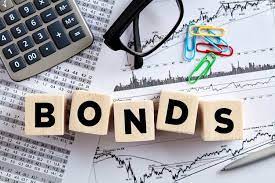These communities issue bonds to collect funds for various civic initiatives. Some examples of these projects include the construction of public schools, the maintenance of bridges, and the expansion of airports. By and large, the performance of an index concentrated on high-yield municipal bonds is tracked by this kind of ETF using a methodology known as sampling.
The ETF use a sampling strategy rather than purchasing each and every investment that is included in the Index. PVI exposes investors to a negligible or non-existent risk of interest rate fluctuations as a result of their emphasis on the front end of the maturity curve. Because of this, investing in it during times of high volatility is less risky, but it also results in lower yields.
Even while this segment of the municipal market has the potential to provide substantial profits, there is a moderate to a high degree of credit risk associated with it. Because of this, it is an excellent contender for the construction of an ETF: Due to the diversified nature of the fund's holdings, investors may reduce their exposure to the risk associated with the fund. These exchange-traded funds (ETFs), which may greatly benefit investors in higher income tax categories.
Bonds for Investors
Investors' interest income from muni bonds is often exempt from taxation. Even though many of these bonds have received investment grade ratings from various rating agencies. An exchange-traded fund that invests in municipal bonds may decrease risk by owning debt issued by various state governments, local governments, and agencies. Concerns about increasing interest rates and inflation led investors to pull $4.8 billion from municipal bond funds during the first week of April. This was the highest withdrawal from municipal bond funds since 2020. However, some municipal bonds have grown increasingly appealing to investors.
1. SPDR Nuveen Bloomberg Barclays ETF
The fund aims to produce investment outcomes corresponding to this index's performance. It invests at least 80% (and often very close to 100%) of its assets in securities included in the index or with characteristics similar to those in the index. who have high-risk tolerances, and are looking for exposure to the high-yield municipal bond market while simultaneously generating high potential yields that are exempt from federal taxes.
2. VanEck Vectors High Yield Municipal Index ETF
The performance of long-term, high-yield, tax-exempt bonds denominated in U.S. dollars is what HYD's benchmark index is intended to monitor. The firm has a total net asset value of $369 billion and 1,831 holdings. The expense ratio for the fund is 0.35 percent. Compared to HYMB's strategy, HYD's approach might be more cautious. Even though high-yield municipal bonds, which often have worse credit ratings than investment-grade debt, are the core focus of HYD's operations, the company also devotes 24.81 percent of its portfolio to investment-grade debt.
Because of its lengthy maturity, HYD is exposed to a level of interest rate risk that ranges from moderate to high. The estimated value of HYD's portfolio will drop by 6.65 percent if yields go up by 100 basis points. These investors are the most likely to find success with this investment vehicle. However, since they often hold a geographically diverse debt portfolio, municipal bond ETFs may be liable to an investor's state and local income taxes.

3. VanEck Vectors Short ETF
which seeks to provide investment results that have a high degree of correlation. The index measures the performance of high-yield, short-term, tax-exempt municipal bonds denominated in dollars issued in the United States. The most recent release of the three, SHYD, was out on January 13, 2014. It has 707 holdings and net assets of 457 million dollars. 4.34 years is the fund's effective duration, which is shorter than average, given that SHYD invests mostly in short-term municipal bonds. This suggests that it stands to lose 4.34 percent in the hypothetical event that interest rates increase by 1 percent. According to the SEC, its yield for the last 30 days is 1.64 percent, while its yield according to the taxable equivalent (the highest tax rate) is 2.2 percent. Taking everything into consideration, SHYD is well suited for investors looking to get exposure to the market for short-term, high-yield municipal bonds while also producing high prospective yields and having a low degree of susceptibility to changes in interest rates.

Taking everything into consideration, SHYD is well suited for investors looking to get exposure to the market for short-term, high-yield municipal bonds while also producing high prospective yields and having a low degree of susceptibility to changes in interest rates. which may greatly benefit investors in higher income tax categories.



